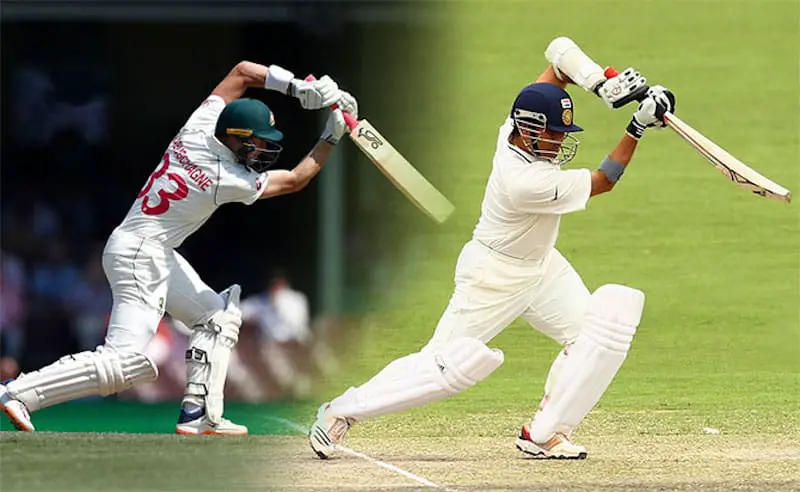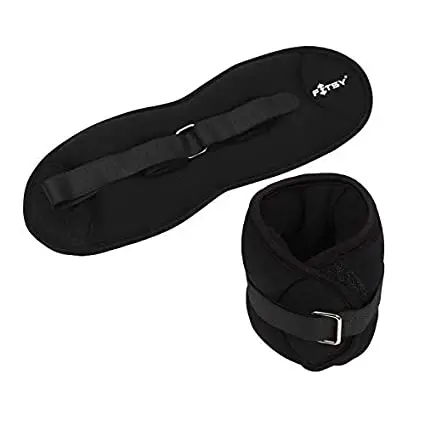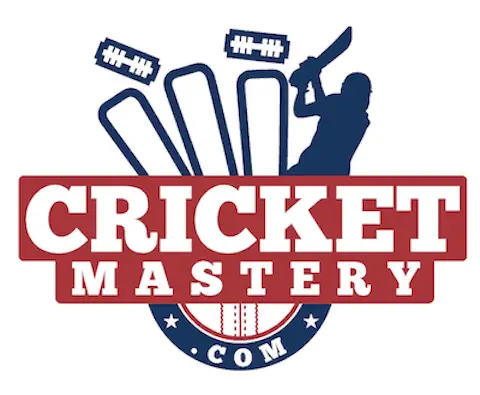Batting in Cricket is all about your footwork. Most successful cricket players have been known to have a great footwork! But, what exactly does the footwork mean, and how to improve footwork in Cricket? Let’s find out!
The Footwork in Cricket basically refers to the movement of the front and back foot of the batsman and the act of transferring the body weight while preparing to face the ball. The footwork of the batsman in cricket can be improved through various drills and proper warm-up.
In a nutshell, batting is all about moving the body in reaction to a speeding or turning ball and eventually hit it. To be successfully able to hit the ball and score the runs, one of the most vital factors is your footwork.
Few players are gifted and don’t rely too much on their footwork to become a successful batsman. However, most of the batsmen focus heavily on their footwork during their practice sessions, also before the start of the match.
There is a lot you can do to improve your footwork. In this article, I will be sharing with you a few tips on how you can master your footwork and become a successful batsman – no matter what your skill level is!
Why is the Footwork of a Batsman Important in Cricket?

Before learning ways to improve the footwork while batting in cricket, you must first know why it is important.
Good footwork is the foundation for the sound batting technique. The great batting legends like Brian Lara, Sachin Tendulkar, Rahul Dravid have had impeccable batting technique with amazing footwork.
You can rarely succeed or sustain for a long time in professional cricket with poor footwork unless you are a naturally gifted batsman like Adam Gilchrist or Virendra Sehwag.
Accurate footwork plays a key role in time the ball to perfection, and find the gap as you play the shot. Research conducted on the biomechanics of the initial movement in cricket batting by The University of Sydney concluded that “Quick and precise footwork is one of the most important factors for playing a successful cricket shot. This includes the initial reflexive movements of the feet prior to the ball release.“
While playing a defensive or an attacking shot, you must quickly get yourself in the position before making the contact, and a quick and apt foot movement helps significantly in doing so. If you struggle to play a particular kind of shot, it could be due to the faulty footwork causing bad timing or wrong body positioning.
While facing quality pace bowling, you must get into a position quickly and remain balanced to play the shot with complete control and get the desired outcome. And for that to happen consistently, you must have excellent, quick, and accurate footwork. Before moving ahead, let’s briefly understand the basics first.
What are the Front Foot and Back Foot in Cricket?

For a right-hand batsman, his left foot is the front foot while for a left-hand batsman his right foot is his front foot when he takes the stance and prepares to face the ball.
How to Effectively Transfer the Body Weight using Footwork in Cricket?
For a few shots like straight drive, cover drive, or on drive, the batsman has to lean forward, move his front foot towards the pitch of the ball, and raise his back foot.
Whereas to play short length balls, the batsman needs to transfer his weight on the back foot which may involve a trigger movement, to begin with. All these require a quick and smooth transfer of weight from front foot to back foot or vice versa.
As you take a stance, awaiting the bowler’s delivery, the weight must be on the ball of each foot (the round, muscly area at the base of the big toe) to get the best out of your feet and be able to move swiftly.
You should flex your knees to get on to the balls of the feet. Once this is done, the body stays in a ready state for the weight transfer which will help to make the apt footwork in a fraction of a second.
How to Improve Your Footwork?
There are various ways to improve your footwork and overcome your struggles while playing difficult shots or fending a tricky delivery. Bad footwork or failure to transfer your weight timely can force you to play errant shots, which can only help the opponents.
Tip 1 – Improve Your Batting Footwork with Footwork Drills
I am sure this section will help you to become a better batsman.
There are various batting drills to improve your footwork. Let’s look at them one by one.
Drill 1 – Batting Tee Drill
For this drill, you need a bat, set of balls, batting tee cones, a flat surface to perform this drill.
Once you are ready with the equipment, arrange all the tees in front of you with some gaps in between and put the balls on their top. The tees should be at a distance such that you can make a forward stride and play front foot shots.
You can place the tees at different angles so that you can play and practice your foot movements for the straight drive, on drive, off drive, cover drive, and square drive shots.
Repeat this drill and observe your foot movement. Basically, while making the contact, your front foot should be near the pitch of the ball, slightly bent at the knees, while the back foot should be raised by its heel.
Make adjustments if you think the footwork is going wrong. You can also take the help of a coach or a friend who can point out any shortcomings in your footwork.
Drill 2 – Drop Ball Drill
Just like the batting tee drill, the Drop Ball drill can be very helpful to improve your front foot shots, and it’s quite easy too. You don’t need any extra equipment before for this drill, however, you would need a partner.
For this drill, ask your partner to drop the ball (tennis or leather ball) around half a meter away from you. You must be ready with the batting stance, and keep eye on the ball as it bounces.
Now move your feet towards the bounce and hit the ball as if you are playing a front foot shot. Ask your partner to drop the ball at different spots so that you can strike it in different directions and practice a variety of shots.
You can practice advancing down by asking the partner to stand slightly far from you so that you can get some distance to cover to reach near the bounce of the ball. In this case, your aim should be to hit the ball after the second bounce.
You can watch the video showcased above to understand the drill in further detail.
Drill 3 – The Stationary Feet Drill
Along with the good footwork, the precision or the timing of the shot depends on the position of the head.
Ideally, the footwork and the head should remain in sync. This drill basically breaks down the process of head and foot movement and focuses only on the head position. The idea is to fix the head movement first, which will help later in your game.
You would need a cricket bat, a leather ball or a tennis ball, a partner who can bowl, or at least help with the throw-down sessions. If you are using the leather ball, you would need protective equipment too. The drill should be performed on a flat surface.
The video above explains the steps briefly (at 1:40 seconds duration in the video).
For the drill, ask your partner to bowl to you (or throw the ball at you) as you are ready for the batting. Now try to hit the ball without any foot movement. Try moving the head towards the ball, so that it is placed over and onto the line with the ball.
With the practice, you can improve your head movement, which will help you in transferring the weight while facing a ball. It will be a lot easier for you to move your feet towards the ball later.
Drill 4 – Practice with Bowling Machine
In addition to practicing alone or with a partner, the bowling machine drill can be highly beneficial to improve your footwork.
Of course, you need a bowling machine for this, and a flat surface, but with this drill, you get to practice against a fixed-line and length ball consistently and repeatedly. A partner may not be able to throw or bowl at a fixed area every time, but there is no such issue with the bowling machine.
Once you set the pace, line, and length you can practice the footwork against that kind of delivery you feel your feet are moving as desired. You can choose to increase the speed to make it more challenging. Once you are done, go for the change in line or length.
Additionally, you can ask your coach to observe your feet movement and provide critical feedback, or record your session to check yourself if the feet movements require further tuning.
Drill 5 – Practice with added weights
Not just cricketers, many professional sprinters or cyclists practice using the weights.
In fact, you can do a few simple warm-up exercises for fast feet movement as indicated in the video above. To increase difficulty, add the weights to your ankles and repeat the exercises mentioned above.
You can also use the weights for faster feet movement while batting. All you need to do is continue with your regular practice sessions, but for some part of the session, you need to add weights by your ankle, alongside the batting pads.
For instance, if you are practicing for 3 hours, use the weights for an hour, and practice without the weights for the remaining time.
With added weights, you will feel a bit difficult to move your feet or transfer your weight on the front or back foot, but over a period you will get used to it. Eventually, it will help you in the match as you will be able to move your feet quite freely while playing your shots.

You can easily find adjustable ankle weights like this one on Amazon. Choose the set with suitable weights. To begin with, do not to go for too high weights.
For junior cricketers, 1 KG weight should be sufficient, while for adult cricketers a set of 5 KG weights can be good enough to start with. I would recommend starting with lesser weights and increase the weight once you are comfortable with it.
Tip 2 – Batting Stance Changes
Yes, batting stance changes can also improve your footwork. How? Well, great players like Kane Williamson slightly lean forward before the bowler releases the ball.
Leaning forward helps you to make a quick forward foot movement to play a front foot shot on a fuller delivery, or it can help you with the trigger movement to sharply move backward while playing a short length ball.
Tip 3 – Don’t Commit to the Shot too Early
While facing a delivery, committing too late or too early could put you in a trouble.
If you commit very late, you may end up mistiming the ball. On the other hand, moving your feet in a particular direction even before the ball is released is not sensible. If you already plant your front foot towards the offside before the bowl is released, the bowler may notice it and try to trap you in front of the stumps.
In case you decide to go for a premeditated shot, avoid bringing your front foot across the offside, rather than move it straight down the pitch. For regular shots, the intent should be to move your feet at the right time, which is at the point of release.
Also, the feet should move in such a direction that you can quickly position yourself on a front foot or a back foot and play the shot accordingly. This can be achieved by plenty of practice, wherein the emphasis should be on watching the ball carefully as the bowler releases the ball.
Tip 4 – Adjust Footwork for Playing Good Length Deliveries
Generally, a batsman can pick fuller or shorter length balls easily and play them out comfortably.
However, a good length ball is always difficult to judge, and it may cause enough dilemma in the batsman’s mind about whether to play it on a front foot or a back foot.
In one of my previous articles (link mentioned below), I’ve talked in detail about the good length deliveries and how to play them. Make sure you check it out!
To successfully fend good-length balls, you first need to judge the line and the length of the ball. If you can do so even before the ball is pitched, you get the time to move your feet accordingly. T
o judge the line and the length of the ball, you need to carefully observe the ball and the bowler’s wrist (angle), as the ball is released by the bowler. You can get a hint from the “point” of release. An early release could mean a fuller length ball, while for a short ball, the release point could be very late.
The wrist’s angle or the bowler’s position with respect to the crease could be a driving factor for the line of the ball.
Plenty of practice will help you to improve your judgment and hence the footwork. It will eventually benefit you for all sorts of deliveries, not just for the good length balls.
Tip 5 – Work on your Trigger Move
For an accurate feet movement, the trigger move is crucial. Let’s first understand what is the trigger movement.
What is Trigger Movement in Cricket?
The trigger movement, also known as the pre-delivery movement is the movement a batsman makes just before the bowler releases the ball. Each player has his own style and trigger movement.
Some batsmen make the “back and across” movement, some take a small step forward, while some may just crouch.
Eventually, the trigger move should prepare you mentally and physically to face the ball, and help you with the desired foot movement (backward or forward) at the time of offering the shot.
Establish a Trigger move
Some players may have a natural trigger movement, while others need to establish one. In any case, you must remember the following technical points for the effective trigger movement.
- Your head must be still at the time of the release.
- Your eyes level in your stance at the point of the release.
- Don’t move away from the stumps.
- Avoid moving across the stumps.
- “Back first” movements are better for facing pace bowling, while “front first” movement can be helpful against spin bowling.
- Avoid frequently moving down the wicket, especially when the keeper is standing up.
You can surely play shots even without the trigger move, however, the trigger move can make it a lot easier, as it gives you the initial rhythm and balance. Also, you get a bit of extra time as you are already into the state of playing the shot even before the ball is released.
Check out the video above where Mark Ramprakash offers his tips on using trigger movements when batting.
Tip 6 – Do Proper Warm Up before Batting
In a match, batsmen have to be on their toes, charged up to play some fine strokes, and sprint between the wickets. Overall, warm-up helps to be in a physical and mental state before going out to bat. But, for good footwork, following warm-up drills are recommended.
Net Sessions
Practice batting in the nets, be it a throw-down session or facing regular bowlers. It is recommended to practice against a pacer and a spinner.
Drop-down Drill
Try the drop-down drill that I’ve mentioned above if you have more time. It will flex your feet.
Skipping
Skipping is another way to charge up your feet muscles. It will help in quick and accurate feet movement in the match.
Final Thoughts
I hope you got enough insights about the footwork, transfer of weight, trigger moves, and some of the drills you can adopt to improve your footwork and overall batting. I recommend the bowling machine drills and practicing with the ankle weights. Be careful about the weights though!
That said, if you are a natural stroke player with amazing hand-eye coordination, it is fine not to worry too much about the footwork. In the end, the runs and the success matters. We should never ask players like Virendra Sehwag to have footwork like that of Rahul Dravid, should we?

